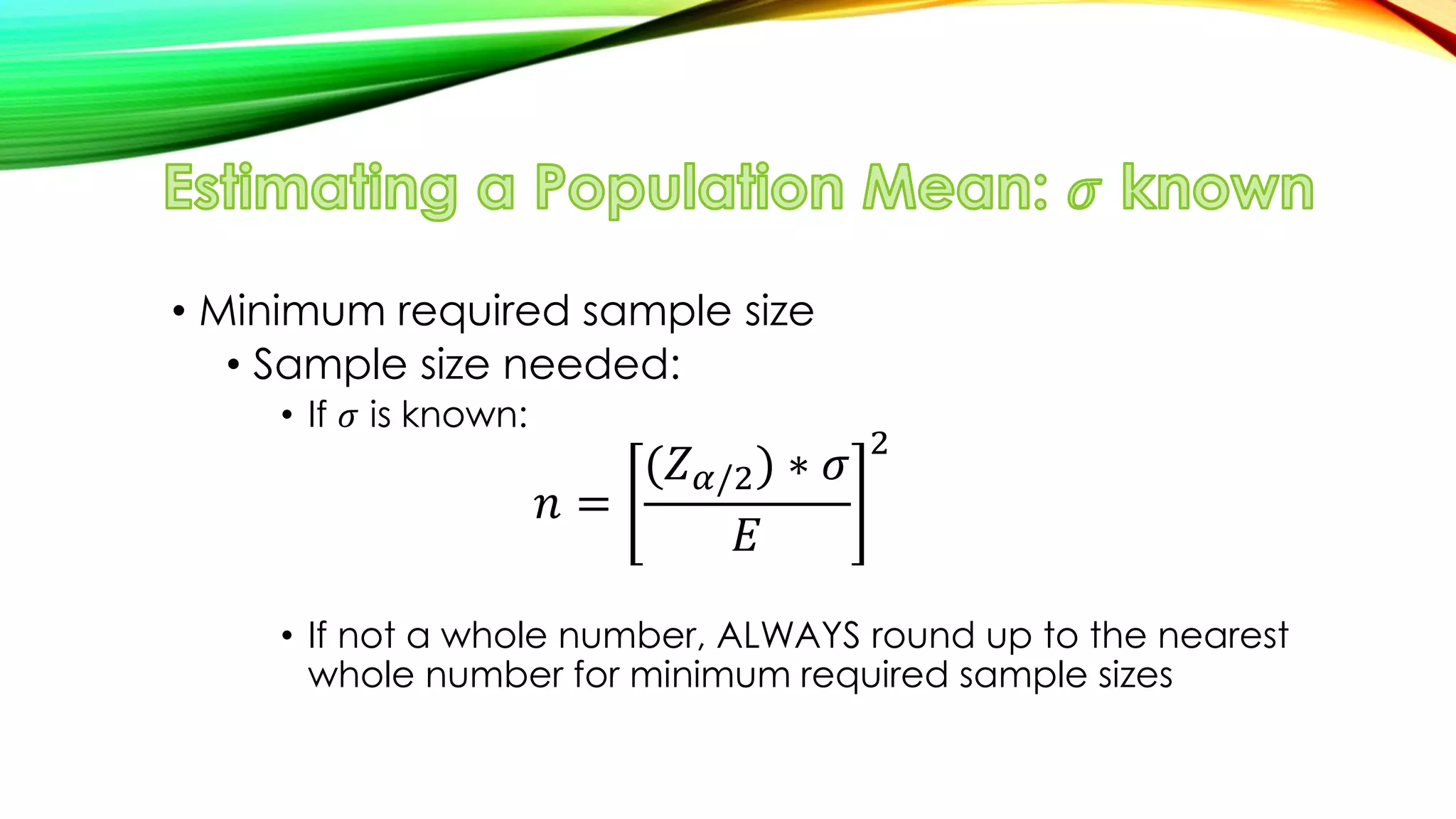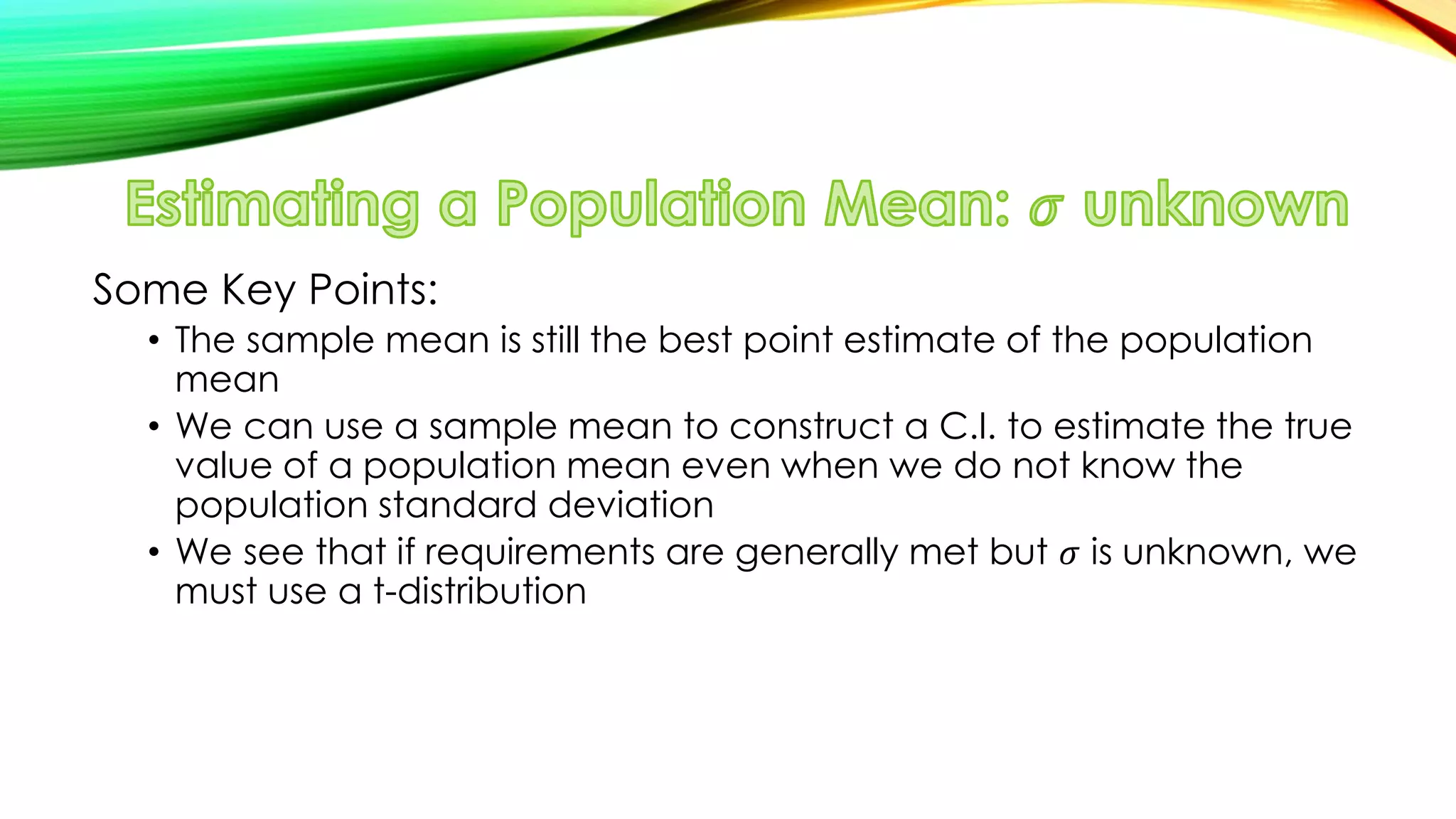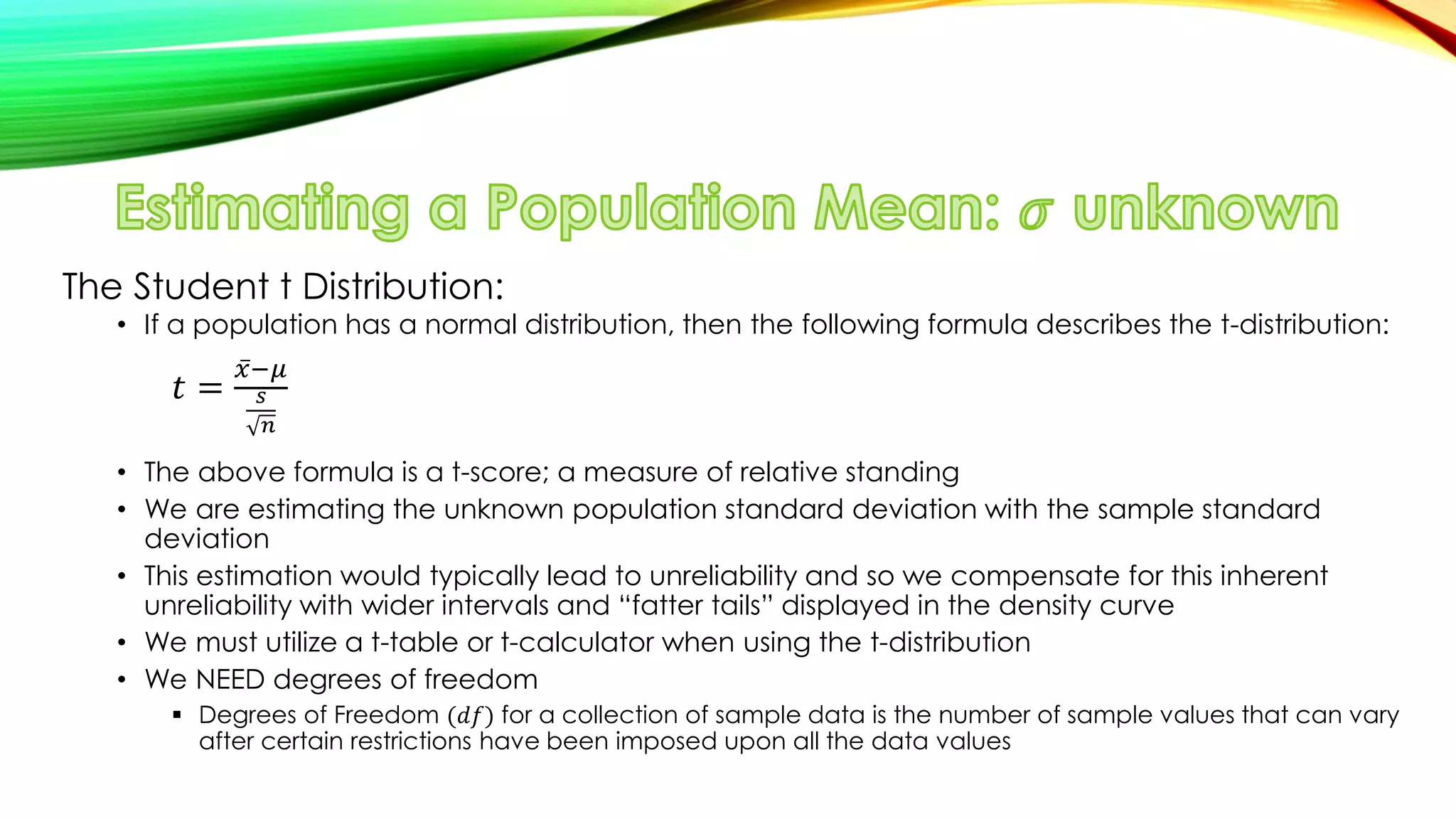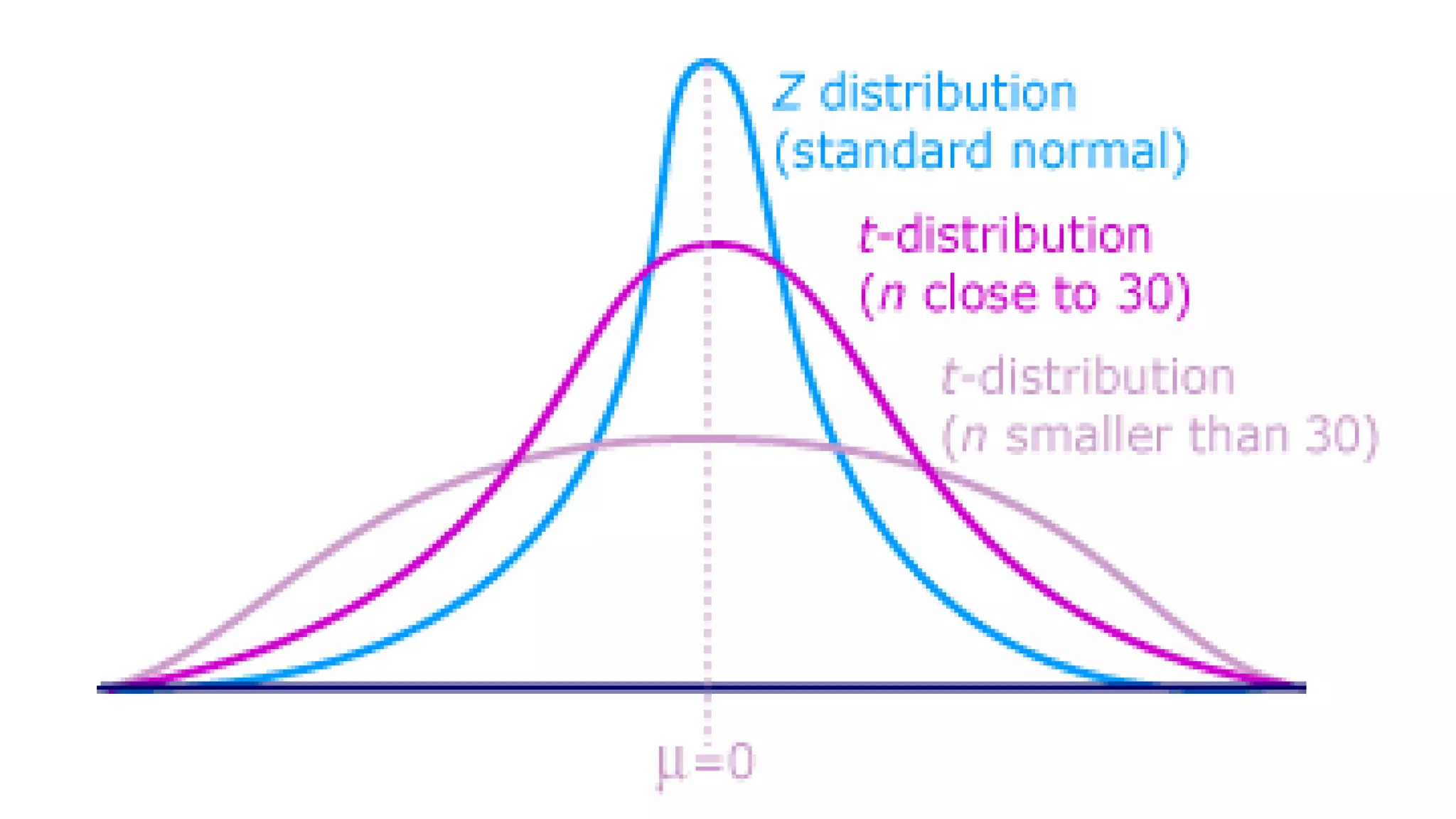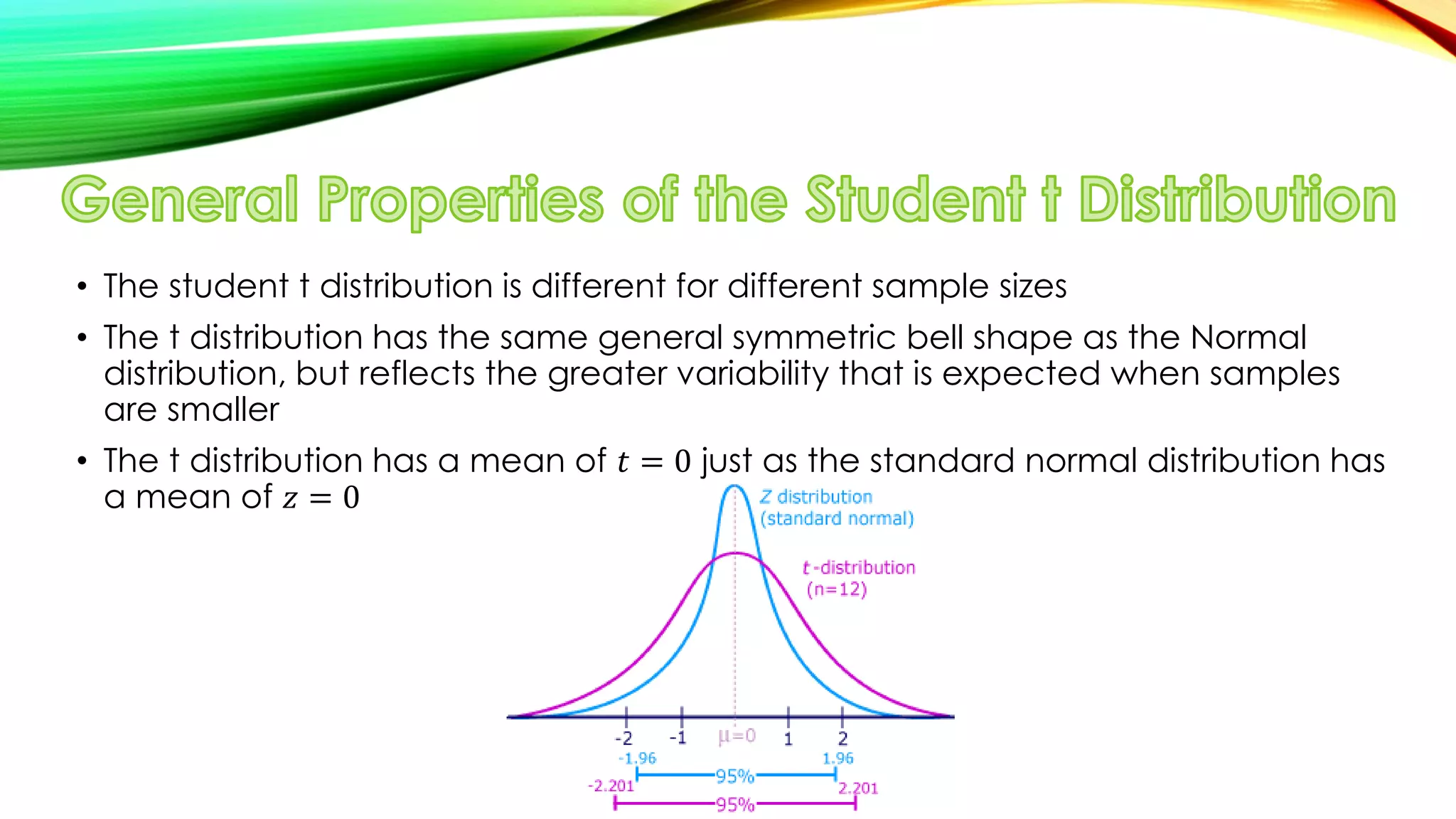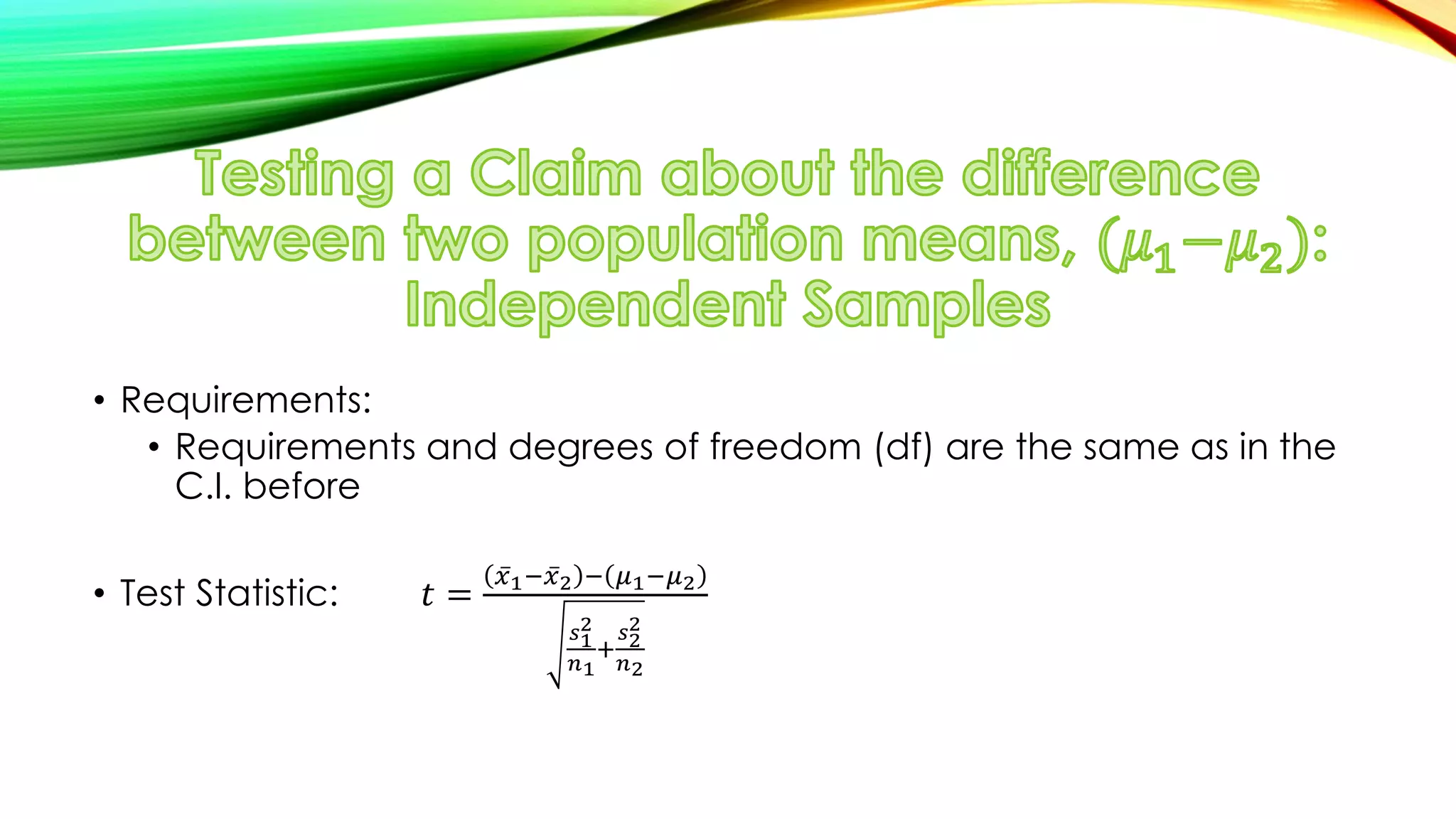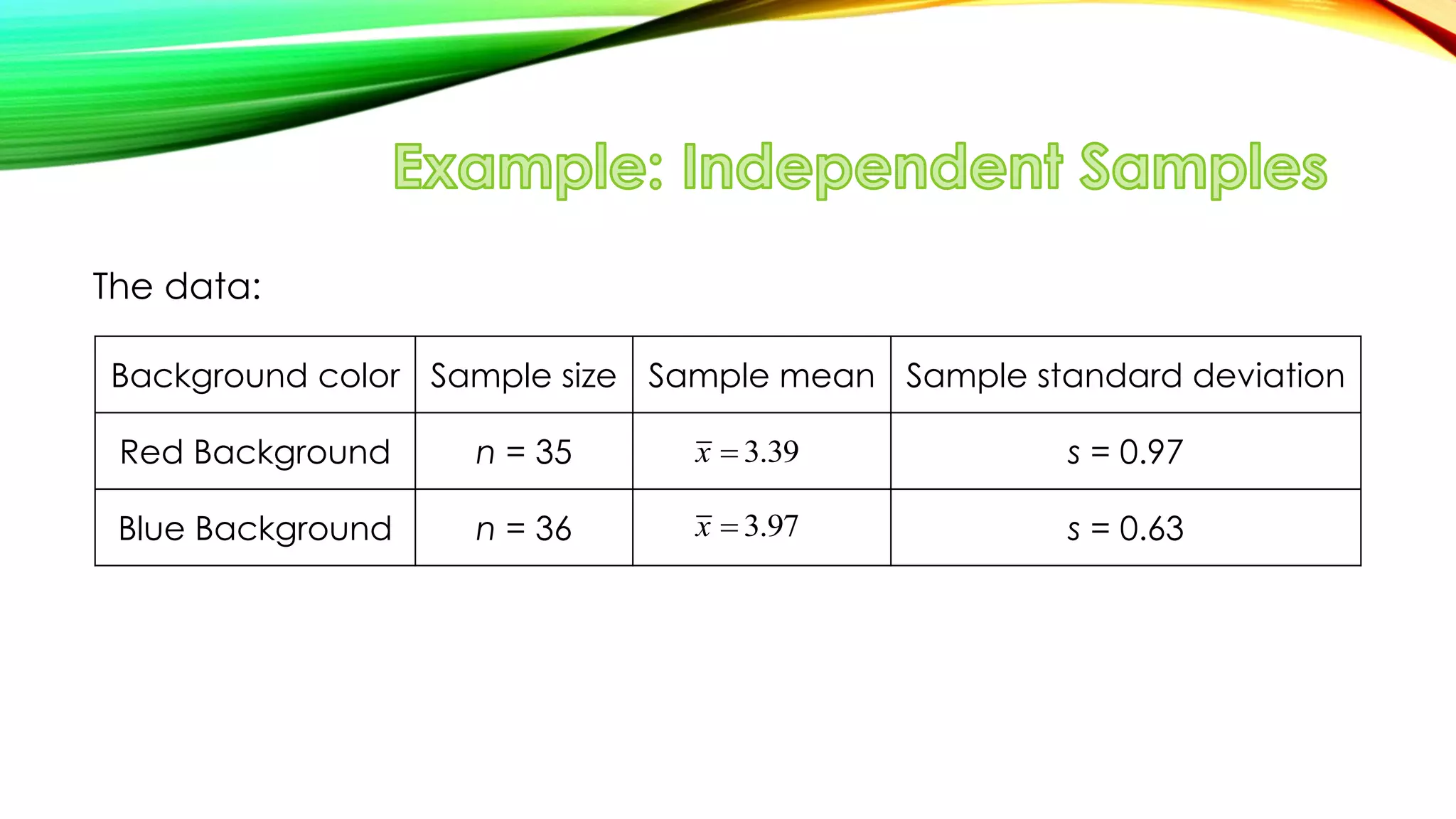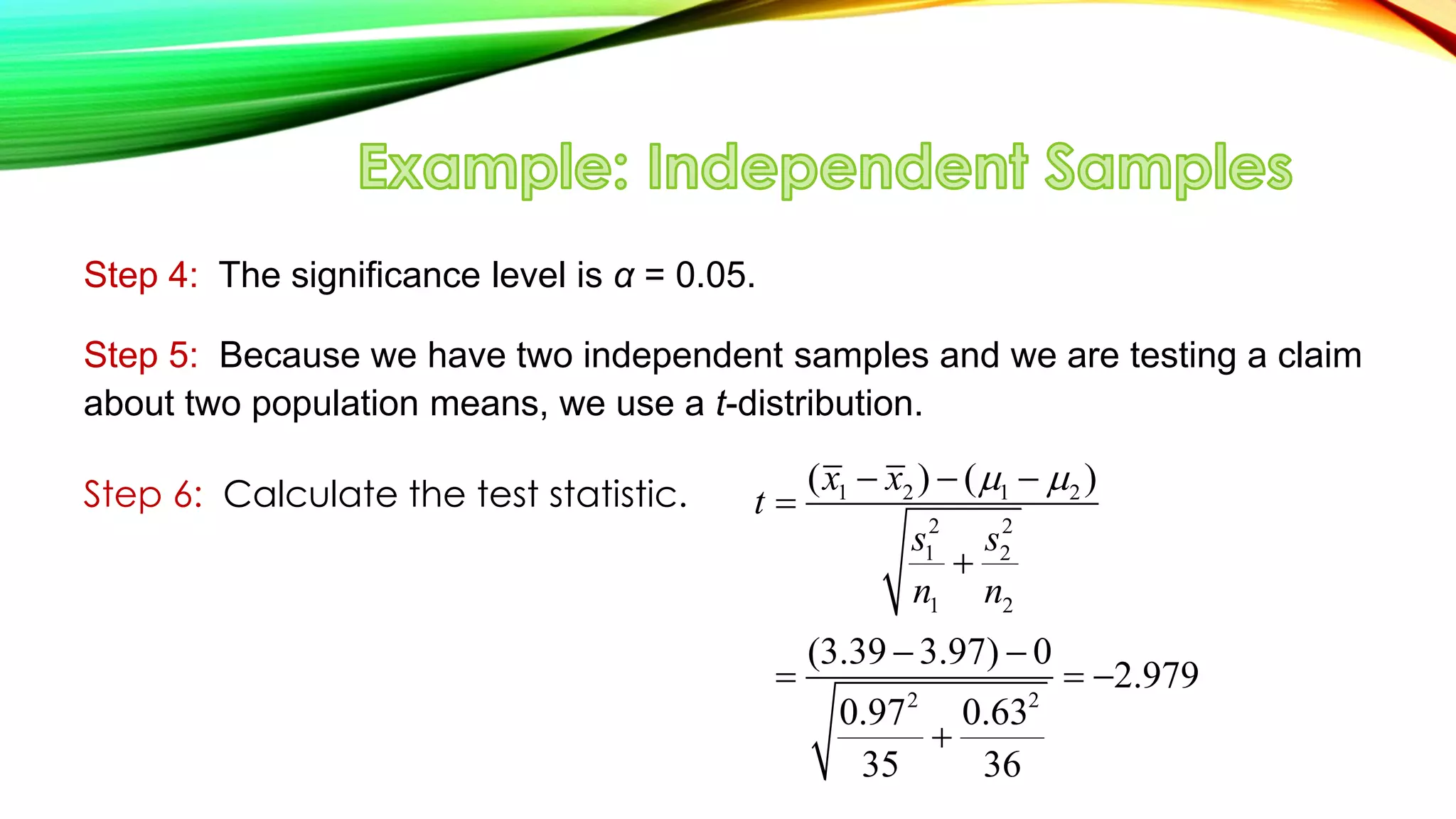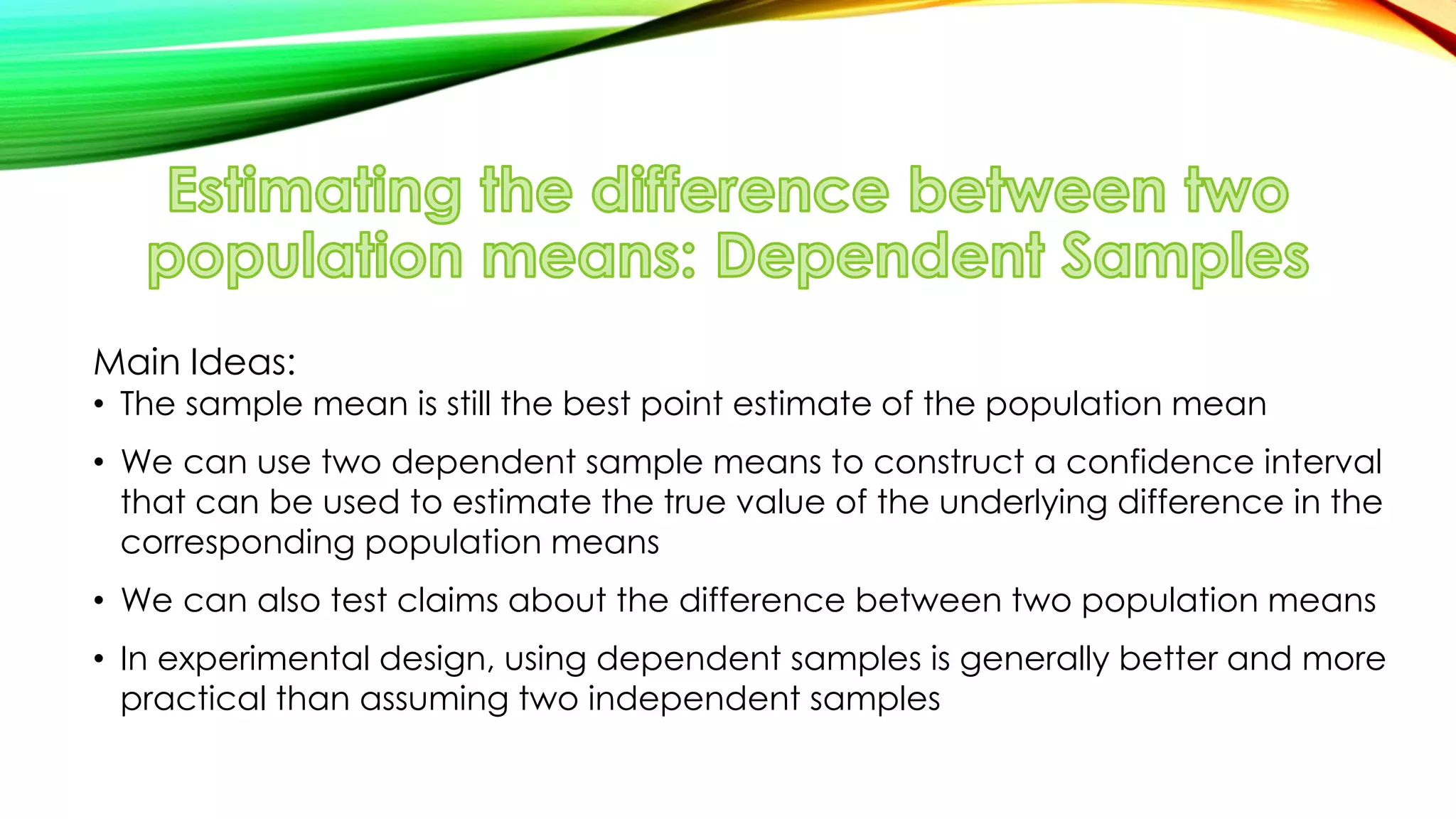- The sample mean is the best estimate of the population mean and can be used to construct confidence intervals to estimate the true population mean.
- There are two situations when estimating a population mean: when the population standard deviation (σ) is known, and when σ is unknown.
- When σ is known, a z-test is used. When σ is unknown, a t-test is used since the sample standard deviation is used to estimate the population standard deviation.




